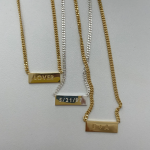
The HydraFacial is a patented skin treatment available at medical spas and dermatology offices. Hydrodermabrasion is sometimes called “hydradermabrasion” since it involves microdermabrasion-like exfoliation combined with hydrating serums.
Known for its three-step process, the HydraFacial works to deep-clean, exfoliate and hydrate your skin. Skin conditions such as acne, dryness, and wrinkles may be treated with this professional procedure.
In principle, the procedure is similar to a regular facial you might get at a spa, but it is supposed to produce more dramatic results. A mechanized wand is used to deep cleanse and exfoliate your skin while delivering serums customized to your skin type.
To find out if a HydraFacial is worth the hype, read on to learn more about its potential benefits, possible side effects, and comparisons with similar treatments.
HydraFacial benefits
It is claimed that the HydraFacial improves skin texture, tone, and appearance. As a result of the deep exfoliation, your pores are cleaned, removing debris and allowing better penetration of face serums tailored to your skin type.
HydraFacial for acne
In the current state of clinical research, there are no studies highlighting the benefits of HydraFacial for acne.
However, microdermabrasion techniques have long been considered effective for treating acne scars as well as acne. This is likely due to the deep exfoliation that removes pore-clogging skin cells.
HydraFacial for blackheads
Dead skin cells also contribute to blackheads. Exfoliating and extracting methods used in the HydraFacial may benefit this type of noninflammatory acne, but more clinical trials are needed to verify these benefits.
HydraFacial for rosacea
It can be difficult to find cosmetic treatments that are safe enough for this sensitive skin condition. Research is needed to prove the safety and effectiveness of the HydraFacial for rosacea, but a 2006 study indicated that similar techniques may be beneficial for papulopustular rosacea.
HydraFacial for anti-aging concerns
A 2008 study of 20 women published in trusted Source found that those who received HydraFacial treatments showed greater reductions in the signs of skin aging than those who used serums alone. Pore size decreased, hyperpigmentation decreased, and fine lines decreased.

HydraFacial side effects and precautions
While the HydraFacial is said to be free of complicationsTrusted Source, you may feel light pressure from the wand during the procedure. HydraFacials aren’t supposed to cause pain or redness, unlike other cosmetic treatments.
You should avoid this procedure, however, if you have an active rash, such as one related to rosacea.
Is HydraFacial safe during pregnancy?
You should consult your doctor before undergoing any aesthetic procedure while pregnant, including the HydraFacial. While many cosmetic treatments may be safe, there have not been enough clinical studies to confirm this.
Can a HydraFacial cause a breakout?
A HydraFacial is designed to help treat excessive sebum (oil) and dead skin cells that can cause breakouts. During skin purging after a deep exfoliation, the treatment may also help remove impurities.
Please let your provider know if you have extremely sensitive skin or if you are allergic to any ingredients that may cause your skin to break out after treatment. In the event of breakouts following a HydraFacial, you should follow up with your doctor.
How does HydraFacial treatment work?
HydraFacials are performed by licensed aestheticians or dermatologists. The procedure is divided into three phases:
- Your provider uses a vortex-like wand against your skin to help remove dirt and oil from deep within your pores. Moreover, they use a peel to help exfoliate and resurface the skin.
- To help remove debris from your pores, your provider uses a vacuum-like attachment on the wand.
- With the help of a pen-like attachment, your provider applies a moisturizing serum containing antioxidants.
A HydraFacial is sometimes followed by other skincare treatments, such as dermal fillers or light therapy. As an add-on, they are not included in the HydraFacial.
How often should you get a HydraFacial?
HydraFacial sessions are recommended according to your skin type and your provider. There are websites that recommend repeating the treatment every 4 weeks, while others recommend repeat sessions every 2 weeks.
Your aesthetician or dermatologist can determine the right number of sessions based on your skin condition and goals.
HydraFacial costs
HydroFacials cost more than typical facials; the average office charges $175 per session. Add-ons and booster treatments will increase the cost. Prices may vary depending on your location.
If you get monthly facials along with microdermabrasion or chemical peels, you may find that a 3-in-1 HydraFacial is a bit less expensive.
HydraFacials are considered cosmetic procedures that aren’t covered by health insurance as standard spa facials. You can ask your provider for cost-saving solutions such as membership packages with monthly discounts.
HydraFacial vs. microdermabrasion
Like a HydraFacial, microdermabrasion exfoliates your skin. Using small crystals, this type of exfoliation is most effective for fine lines, wrinkles, age spots, and acne scars. Microdermabrasion also doesn’t use serums.
Dermalinfusion vs. HydraFacial
The technology and benefits of Dermainfusion are similar to HydraFacials. They are both three-in-one procedures that cleanse, exfoliate, and deliver serums tailored to your skin concerns. Dermalinfusion may cause some redness and irritation afterward, unlike HydraFacial.
HydraFacial vs. radiofrequency therapy
Radiation therapy (RF) increases cellular turnover and collagen production by using heat energy in deep skin tissues. This may promote tighter, smoother skin overall. Acne scars may also be treated with RF.
Both HydraFacial and RF therapy address signs of skin aging, however RF does not involve exfoliation or serums. RF may cause redness after each session.





